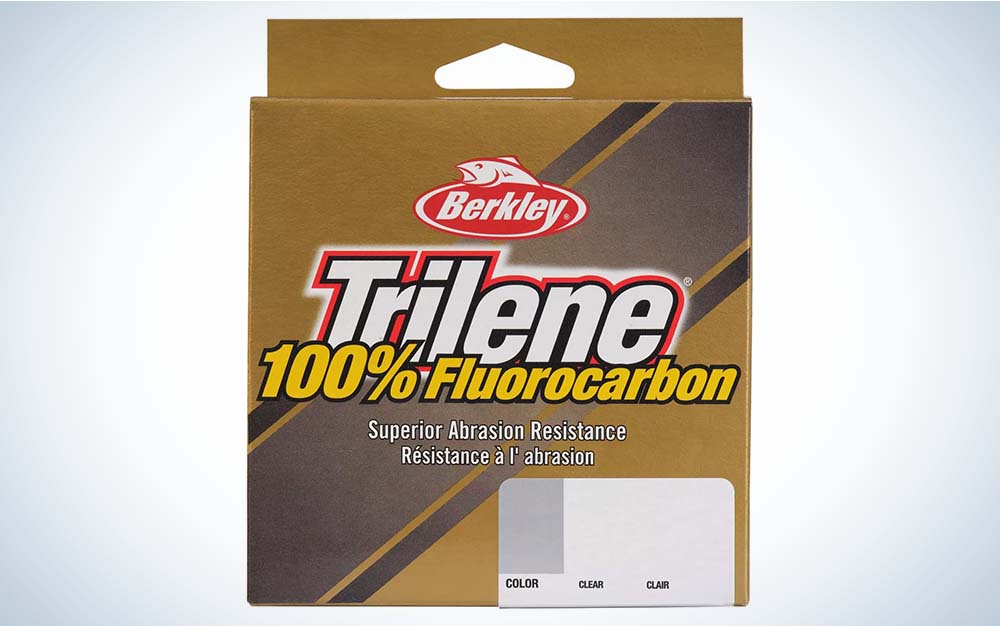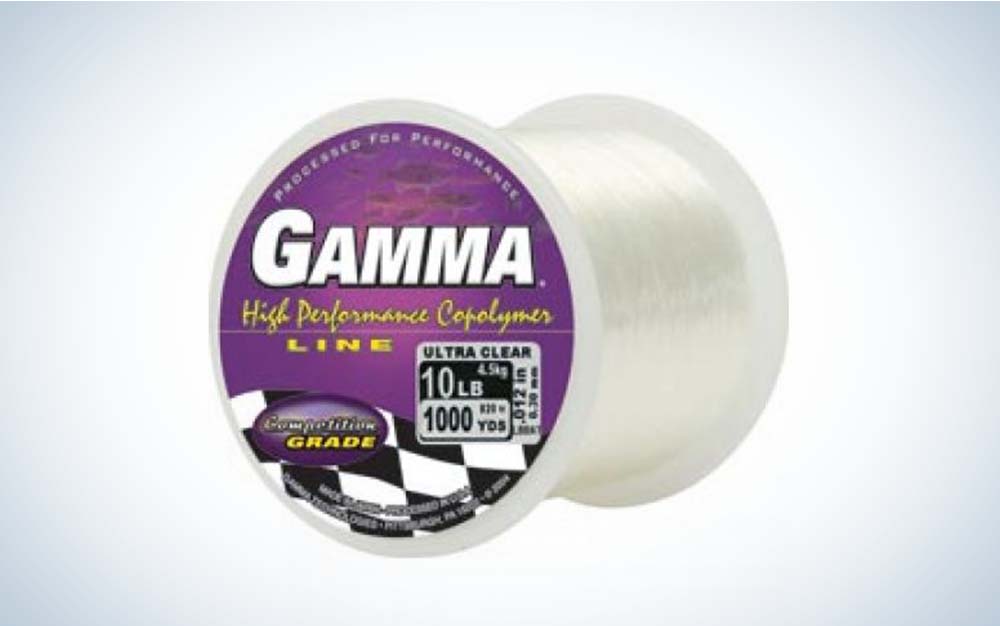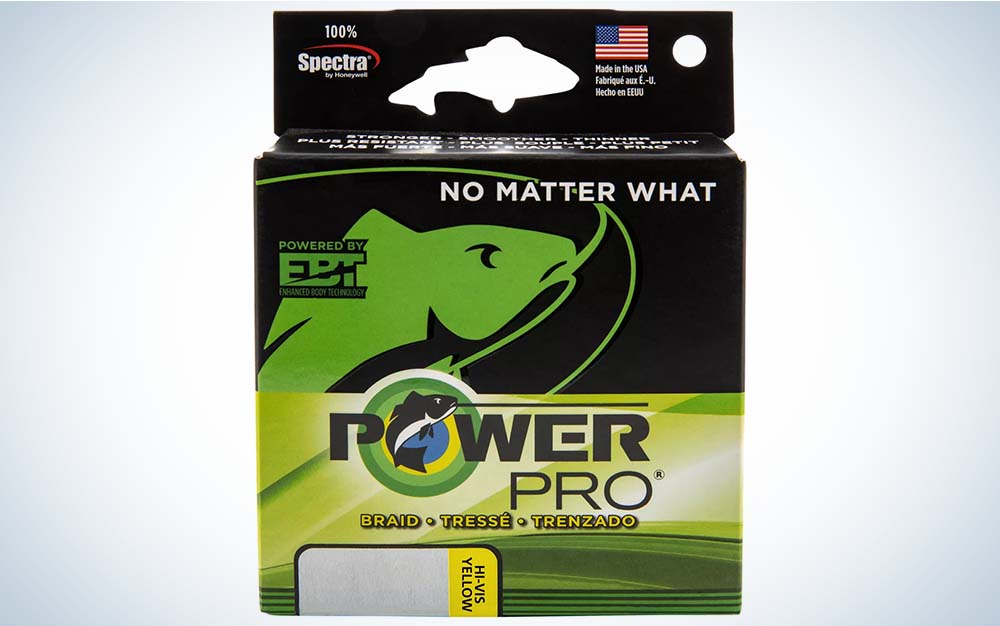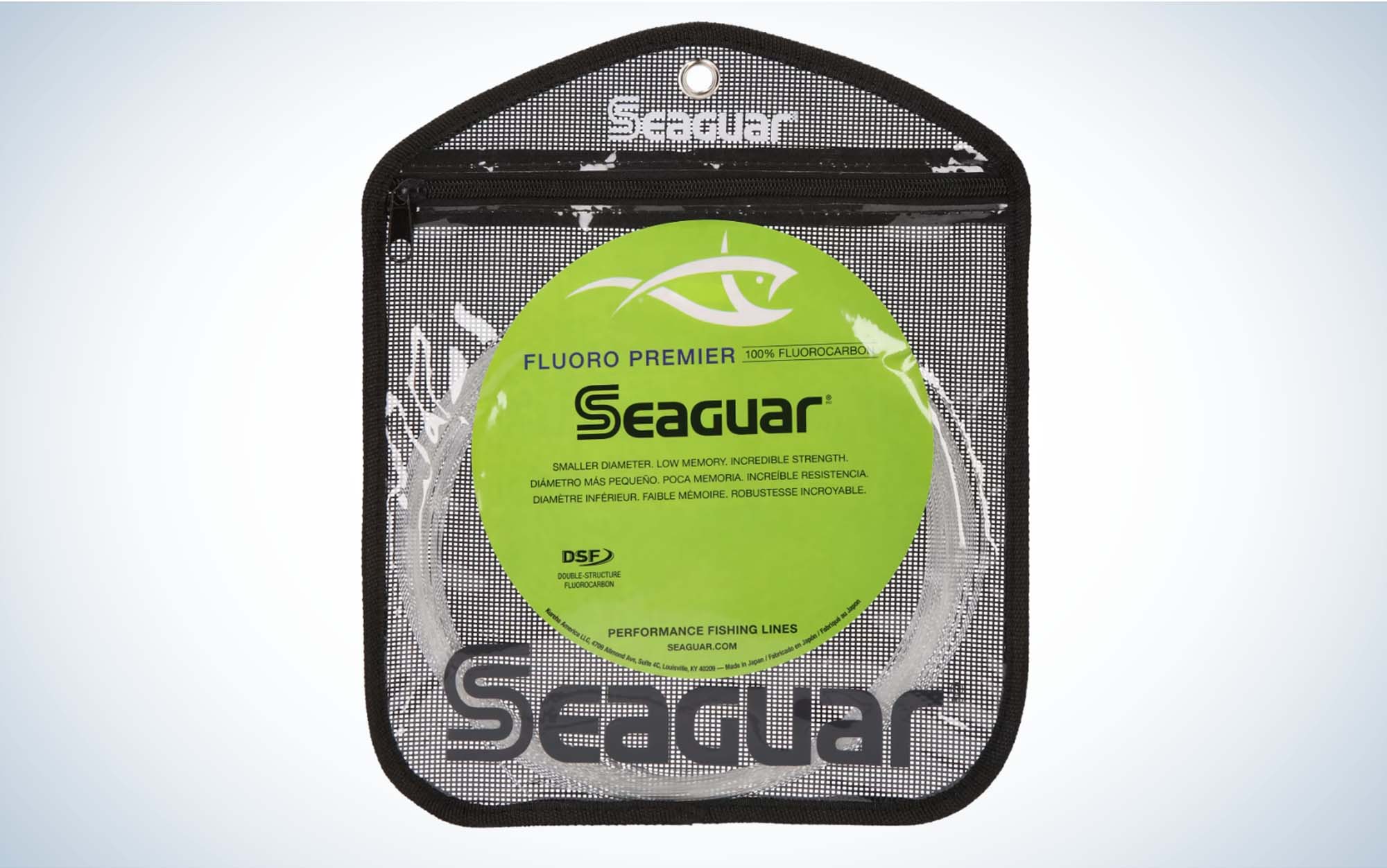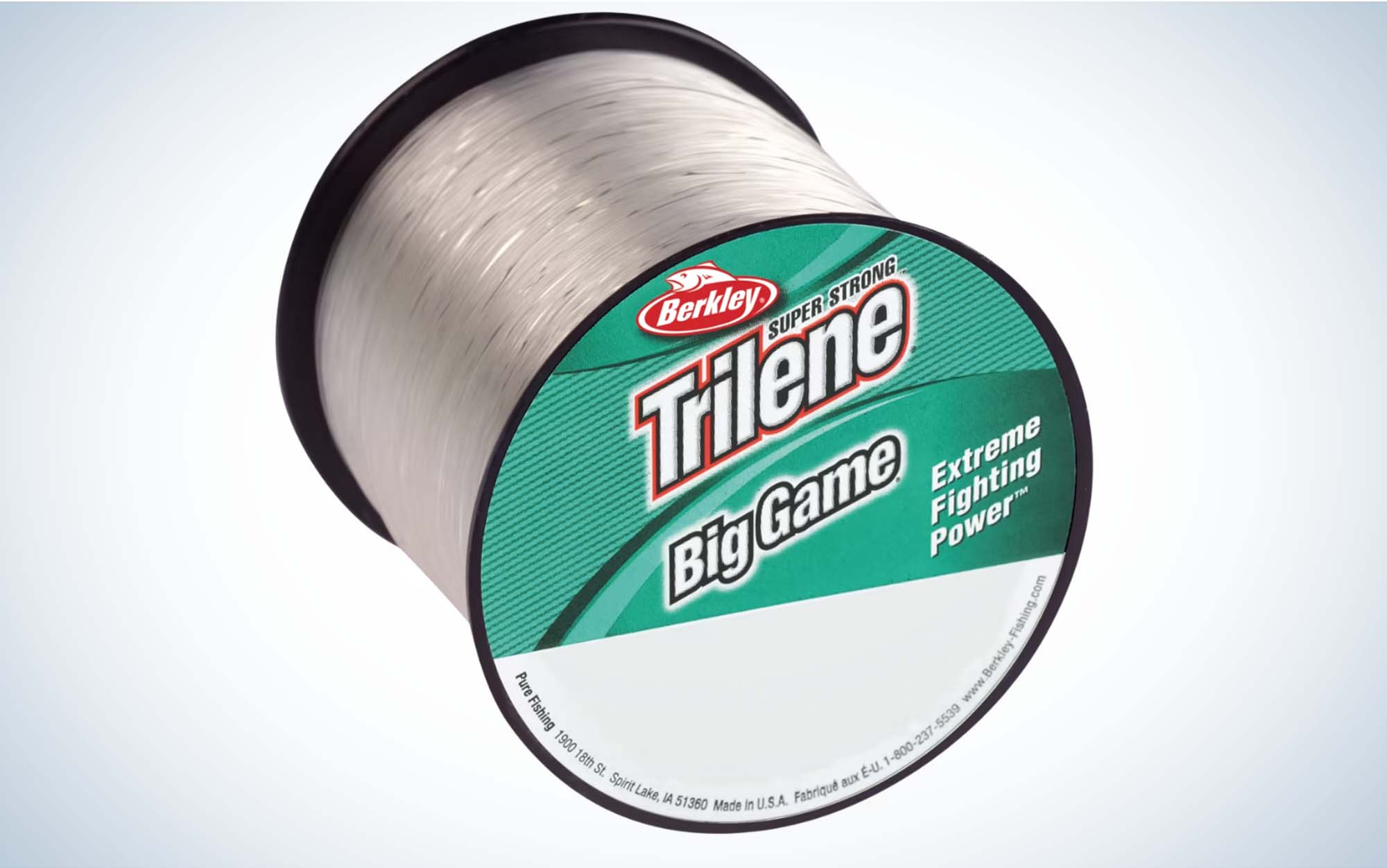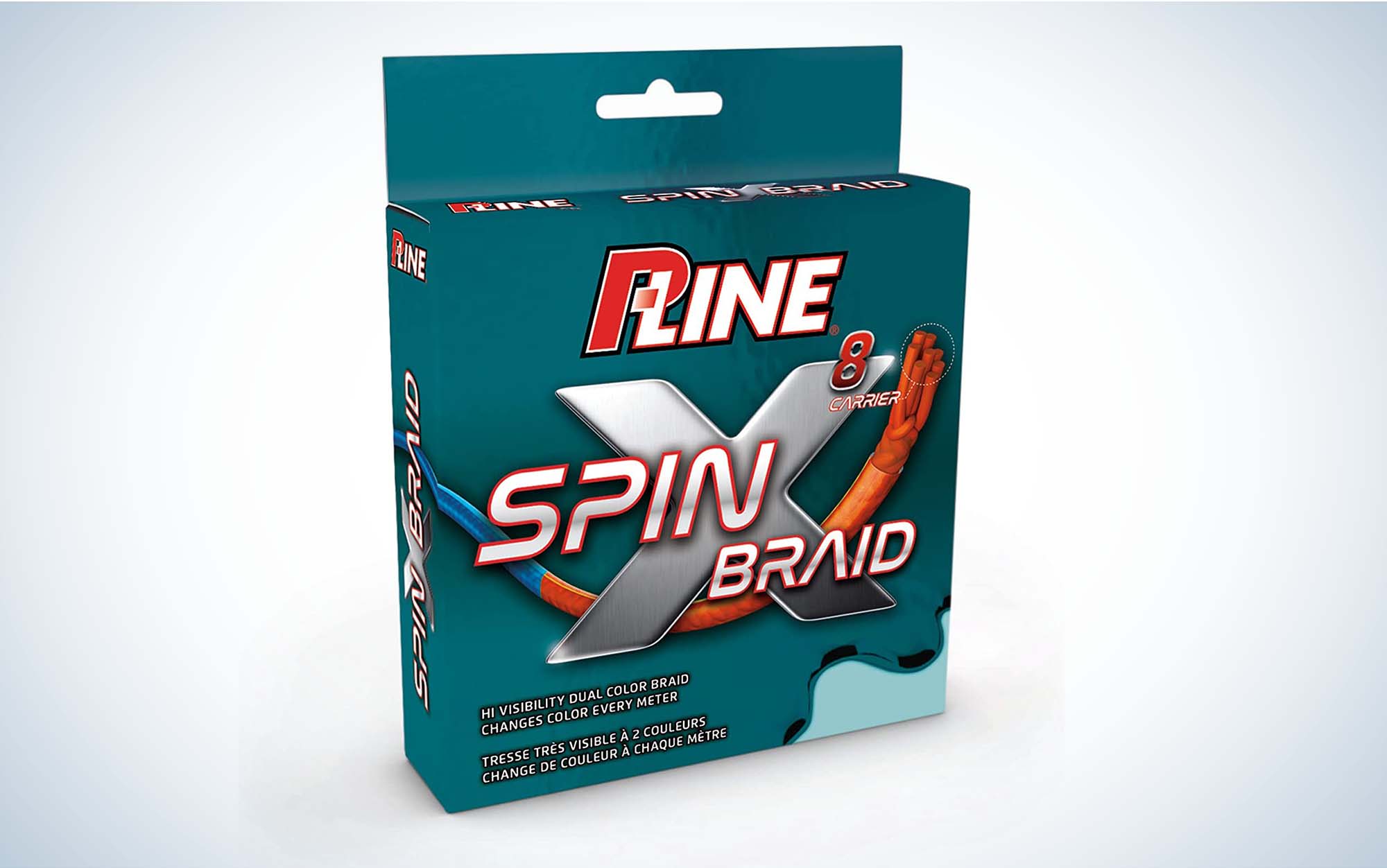We may earn revenue from the products available on this page and participate in affiliate programs. Learn More ›
Updated Feb 6, 2023 2:53 PM
When I started bass fishing over 40 years ago, the best fishing lines for bass were also the only fishing lines for bass. We didn’t have many options back then, and stretchy monofilament had to cover all of your tactics and techniques. That wasn’t a horrible outcome because even the early monos were good, but they limited an angler’s effectiveness. Techniques like punching grass and throwing a frog over matted vegetation benefited substantially once modern braids entered the picture, and fluorocarbon made an increasing range of finesse techniques viable, reliable, and productive.
Today, we suffer from the opposite “problem,” we now have too many options. Not only do we have monofilament, copolymers, fluorocarbon, and braid, but we also have them in multiple colors, an incredible range of sizes, and formulations dedicated to hyper-specific techniques. The fluorocarbon that you use for flipping might be different from the one you use for fishing reaction baits, even within the same manufacturer’s lineup. You might use a specific braid for all of your non-stretch uses, but prefer it in moss green for heavy cover flipping, and in fluorescent yellow when using it on a spinning rod with a leader.
Yes, it’s possible to go overboard, but you don’t necessarily need to do so. I’ve picked out seven lines that I think will cover the full spectrum of needs for all bass anglers. In fact, you could probably get away with no more than three of them and still compete and perform at the highest level. To make choosing the best fishing line for bass even easier, I also highlighted the techniques I’d recommend each line for.
Methodology
I may be a rod and reel snob, but the one area where I truly will not compromise is my line. It’s the ultimate connection and the most likely to suffer from abuse. I think I’ve fished every brand on the market at some point and some just don’t do it for me—my particular bugaboo is memory. A line that coils up after even a reasonable amount of usage is distracting and limits effectiveness. I was a late convert to fluorocarbon and still use it sparingly, while I probably use braid (with or without a leader) more than most bassheads. Still, I tried to keep an open mind as I experimented, using both “conventional” and oddball choices across the spectrum.
The Best Fishing Lines for Bass Reviews and Recommendations
Best Premium Fluorocarbon Line: Seaguar Tatsu
Key Features
- Breaking strength: 4 to 25 pounds
- Spool sizes: 200 and 1,000 yard
- Material: 100 percent double-structure fluorocarbon
- Color: Clear
- Best for: Leader material, finesse presentations
Pros
- Remarkably supple
- Maintains high knot strength
- Low visibility
Cons
Product Description
Seaguar’s other fluorocarbons like InvizX and AbrazX were at the top of the charts for performance, and are still excellent choices, but Tatsu unseated them as the best fluorocarbon fishing line for bass. It’s invisible and abrasion-resistant like other fluoros, but reduces the lack of manageability that plagues some of them. The line sinks quickly and you’ll feel every bite, even 30 or 40 feet down in a crosswind, yet you’ll never suffer from unexpected or unwanted nicks or memory. Each spool is ultra-consistent, and it comes in a full range of sizes for all bass applications. If you can’t afford it for all uses, buy it for leader material because at about 8 cents a foot, using it as a leader is a lot more affordable than a main line. I use it on all of my spinning reel braid-to-fluoro finesse connections, for techniques such as dropshotting and Ned rigging. All the great qualities that make Tatsu one of the best fishing lines for bass also make it a great leader material.
Best Fluorocarbon Line for Everyday Use: Berkley Trilene 100% Fluorocarbon
Key Features
- Pound test: 4 to 25 pounds
- Spool sizes: 100, 200, and 2,000 yards
- Material: 100 percent fluorocarbon
- Colors: Clear and green
- Best for: Flipping, cranking, moving baits that require frequent line replacement
Pros
- Nearly invisible
- Good strength
- Long track record of reliability
Cons
- Not quite as supple as ultra-premium fluorocarbons
Product Description
The Trilene brand name has stood the test of time in serious bass fishing circles, and Trilene 100% Fluorocarbon is a reasonably-priced option that will benefit everyone from the first-timer to the serious bass pro. It handles well, is remarkably strong, and has similar refractive characteristics to water so it’s virtually invisible. This is what I use for my chatterbaits and cranking because I don’t have to worry about excessive memory, but I also know that I won’t have to take out a second mortgage if I decide to respool.
Best Copolymer Line: Gamma High Performance Copolymer
Key Features
- Pound test: 2 to 40 pounds
- Spool sizes: 275 and 3,300 yards
- Colors: Clear and green
- Best for: Topwaters, spinnerbaits, Chatterbaits, soft plastics
Pros
- Exceptionally supple
- Especially great for topwaters and moving baits
- Wide range of sizes available
Cons
- More expensive than average monofilaments

Product Description
If you can’t decide between fluorocarbon or monofilament fishing line for bass, copolymer, like Gamma High Performance, might be the way to go. It takes the best of mono and fluoro—facility of use, strength, and lack of memory—and eliminates most negatives. I still find myself spooling it up in situations where many other anglers use fluoro, and I don’t feel that I’m giving up anything except occasional aggravation. It’s becoming increasingly popular for tossing big swimbaits for good reason. The lower memory reduces the dreaded spring you get with mono on the first cast of the season and it has good abrasion resistance for ripping baits through wood. It also comes in an expansive range of sizes. If you want to give it a try, buy a pony spool, but don’t be surprised if you invest in bulk sizes going forward.
Best Everyday Braided Line: Original Power Pro Spectra
Key Features
- Pound test: 3 to 250 pounds
- Colors: Moss green, hi-viz yellow, vermillion red, and white
- Spool sizes: 100 to 3,000 yards
- Material: Spectra
- Best for: Flipping, frogging, heavy vegetation
Pros
- Round shape for easy handling
- Exceptional range of sizes
- Great color choices for all-around use
Cons
- Sometimes a little noisy going through guides

Product Description
Power Pro was one of the first brands of braids to gain widespread acceptance and while they’ve introduced newer formulations since that time—many of them exceptional—the original Spectra formulation is still reasonably-priced and an exceptional value. I spool up many reels each year with 50- and 65-pound test Power Pro for frogging and grass flipping each year, and use it on hard-fighting beasts like Amazonian peacock bass, with the full expectation that it’ll never let me down because it never has. Other lines may be thinner or sink better, but you cannot go wrong with the original Power Pro for the price and performance.
Best Premium Monofilament Line: Sufix Advance
Key Features
- Pound test: 4 to 25 pounds
- Spool size: 330 and 1200 yards
- Colors: Clear, lo-viz green, and neon lime
- Best for: All-around use and longevity, topwaters, spinnerbaits, swimbaits
Pros
- Lower stretch than most monofilaments
- Excellent knot strength
- More sensitive than other monos
Cons
Product Description
Sufix calls this “the mono that thinks it’s a braid” and that’s a good description because while it’s still supple and easy to manage, it doesn’t have the “rubber band” feel that limits the usefulness of some other monofilaments. I found that claim to be true and it’s remarkably strong, yet supple. As noted above, I wasn’t immediately sold on the value of fluorocarbon. I find some of them hard to handle, particularly in cold weather or in smaller sizes. If you too find yourself in that boat, this will do everything that most fluoros will do, without most of the hassles, or cost.
Best for Keeping Waters Clean: Strike King Tour Grade Monofilament
Key Features
- Pound test: 6 to 20 pounds
- Spool sizes: 200 and 600 yards
- Color: Clear
- Best for: Everyday use across a wide range of categories, for both beginners and experts alike
Pros
- Wound on the spool precisely for minimal twist or damage
- Low visibility clear formulation
- Conservation-minded recycling program
Cons
Product Description
Strike King has long been known for top quality lures, but now they’ve entered the line game in a big way. While they have quality braid and fluorocarbon, they didn’t forget the monofilament addicts. This line is wound on the spool precisely and functions well in all weather and water conditions. I’ve liked it for spinnerbaits, topwaters, swimbaits, and even Senkos. Moreover, the smaller spools have a built-in “Sidewinder” spooling tool and tensioner. That added feature makes learning how to spool a spinning reel or baitcasting reel easier. Even better, the company includes a prepaid envelope that enables anglers to recycle used line, ensuring that it won’t end up polluting the environment.
Best Bargain Fluorocarbon Leader Material: Seaguar Fluoro Premier Fluorocarbon
Key Features
- 25-yard spools
- 12 to 40-pound test
- Super low visibility
- Best For: Pitching and flipping.
Pros
- Reasonable price
- Great knot strength
- Small diameter
Cons
- Not available in finesse strengths
Product Description
Bass anglers increasingly want to meld the values of braid – long-lasting durability, minimal stretch—with the low visibility of a fluorocarbon leader, especially when flipping and pitching for pressured fish. Seaguar makes a wide variety of fluorocarbons, but this affordable leader material will allow, if not encourage you to change things out regularly. Its double-structure process fuses two different resins, and maintains a small diameter while attaining the best of both worlds – abrasion resistance and low memory.
Best Monofilament for Swimbaits: Berkley Big Game
Key Features
- Green coloration
- 8 to 30 lb. test
- Great shock resistance
- Best For: Big swimbaits and glide baits where affordability and strength matter equally.
Pros:
- Limited stretch
- Highly abrasion-resistant
- Low memory
Cons:
- No monofilament can be as low-stretch as a quality fluorocarbon
Product Description
If you’ve purchased a $100 or $200 (or even more expensive) swimbait and you’re afraid you’ll snap it off on the first hard cast, Big Game will allow you to get the maximum action out of your premium lures without that same risk. It’s made to handle big fish, and the green coloration makes it camouflaged in the water. Furthermore, it’s bargain-priced, with spools larger than standard filler spools coming in at lower prices than those other options. Even the 25- and 30-pound tests are remarkably manageable, especially in cold temperatures where other lines tend to show their faults.
Read about the best swimbaits in our full review.
Best Braided Line for Spinning Reels: P-Line SPIN-X Braid
Key Features
- 8-, 12-, 16-, 20- and 24-pound test
- 150-yard spools
- Dual high-visibility color patterns
- Best For: Finesse applications where feel and manageability are at a premium
Pros:
- Alternating colors make line-watching simple
- Remarkably soft eight-carrier construction
- Comes off the spool easily for long casts
Cons:
- Not available in strengths over 24-pound test.
Product Description
Even with the most forgiving of braids, spinning reels can occasionally cause problems, from line twist to wind knots to slow egress from the spool. This reasonably-priced option from P-Line solves those problems, and with its dual-color construction (the bright blue and vibrant orange colors alternate every meter), line watching is a snap. You’ll be able to detect even the most subtle deep water bites with ease. This is an eight carrier line, and it’s super soft, which enables long casts with the proper spinning reel. It can be fished straight out of the package, or with the addition of a matching fluorocarbon leader.
How to Choose the Best Fishing Line for Bass
Just like there’s a time to throw a spinnerbait rod or a crankbait rod, there are situations to use braid, mono, and fluoro. Here’s how to know when to spool up the proper line.

Stretch
A line’s stretch is generally the biggest variable among different styles of line and even within categories. If you try to set the hook on a 2-pound bass in 30 feet of water on a windy day while using mono, you’re giving up a lot as compared to braid, or even fluorocarbon. That’s because mono stretches the most of all types of fishing line. Nevertheless, there are times when some stretch is beneficial, particularly on moving baits where you don’t want to pull the lure out of the fish’s mouth on a hook set.
Breaking Strength
How strong does your line really need to be? Flipping a 1-ounce weight in matted grass for even smallish bass, you’ll be surprised at how easy it is to break 20- or 30-pound braid. At the same time, in open water, most anglers would be shocked at how strong 8-pound test fluorocarbon can be. Of course, you have to treat it well, keeping it out of sunlight and extended heat, or even the best lines can weaken over time. For heavy cover fishing and applications like punching and frogging, a 65-pound braid is standard. But, let’s say you’re fishing a medium or medium light action spinning rod in open, clear water. In that situation a light fluorocarbon in the 6- to 12-pound range is ideal.
Visibility
Bass that are programmed to feed indiscriminately or living in the dark may not care about the sight of bulky braid, but pressured finesse-oriented fish definitely demand a stealth approach. Fluorocarbon is less visible than mono, which is less visible than braid. In some cases, though, visibility is valuable. For example, on a spinning rod in deep water, with a fluorocarbon leader, high-visibility braid will often let you see strikes before you feel them.
Spool Size
Make sure that the spool has enough line on it for your intended purposes, whether that’s to fill one reel or to get through a season. Bulk spools can be a painful investment in the beginning, but they’ll encourage you to change line regularly and will ultimately reduce waste.
Cost
Fortunately, there are many good fishing lines for bass at a variety of price points. While paying a premium sometimes gets you better performance, there are also low-cost values. I’m personally willing to pay more for premium braid, which I change out only once or twice a season, versus fluorocarbon, which requires more frequent respoolings to minimize performance loss.
FAQs
Q: What is the best pound test line for bass fishing?
Most serious bass anglers use thousands of yards of 8- to 25-pound test line in the course of a year, as well as braid in the 50- to 65-pound class. The most-used sizes include 8 for finesse presentations, 12-17 for moving baits, and anything heavier for thick cover and oversized lures.
Q: What color line is best for bass fishing?
For spooky or pressured fish, the best fishing line for bass are clear, at least where the lure joins the line. When using opaque braids, think natural colors such as moss green if the lure is tied directly to the braid, or high visibility shades of yellow, green, or even pink if using a fluorocarbon leader.
Q: What fishing line do pro bass anglers use?
Pro bass anglers depend heavily on fluorocarbon lines, changing it out frequently to maintain suppleness and minimize memory. They also frequently use braided lines for heavy cover, or on a braid-to-fluorocarbon rig for finesse. Some still use monofilament and copolymers, but the percentage is rapidly decreasing.
Final Thoughts
As noted above, there are more best fishing lines for bass than ever, and sometimes picking the size and style that work best is a personal matter. For example, someone who flips for big fish in clear water might need a lighter or less visible line than someone who pursues the same technique in dirtier water or heavier cover. Similarly, if I use a medium action, moderate rod for spinnerbaiting, that might require a line with less stretch than someone who uses the same lure on a heavier, faster rod. Grabbing rods with different lines—from mono, to fluoro to braid, and back again—in the course of a day requires a changing of attitude and hook sets. I find that the more I simplify my system, the more effective I become.

